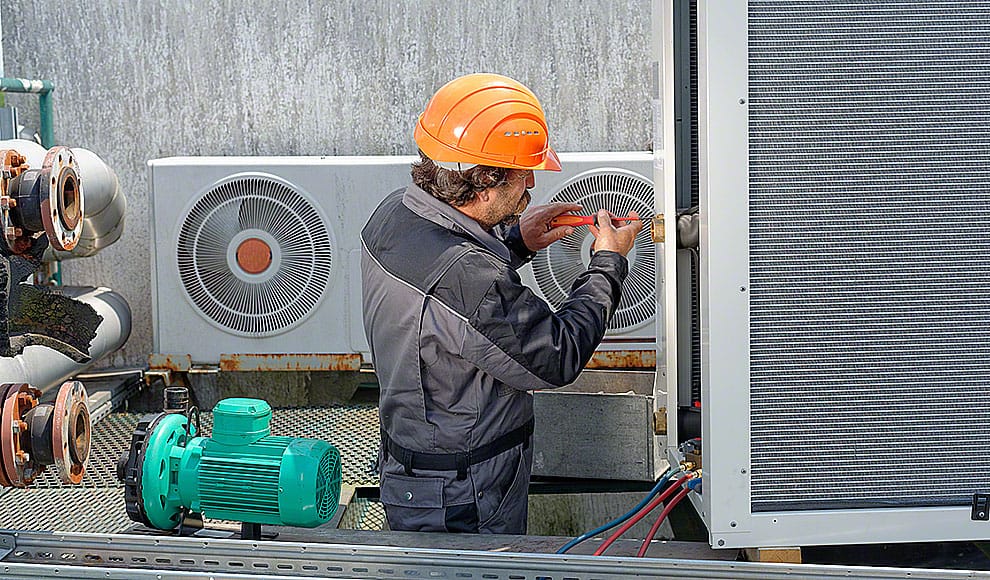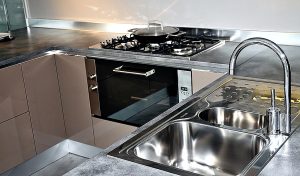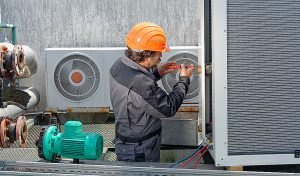
In today’s fast-paced commercial landscape, partnering with commercial HVAC companies ensures optimal efficiency and uninterrupted operations. Businesses rely on consistent temperature control and precise humidity management to maintain a healthy work environment and protect sensitive equipment. From skyscrapers to retail outlets, well-designed systems balance power consumption with performance to deliver unwavering comfort across large spaces. Recognizing the importance of robust installation and expert guidance empowers facility managers to make informed decisions that drive productivity and foster long-term savings.
The Role of HVAC Systems in Business Operations
A well-maintained HVAC system defines productivity and wellness within professional settings by regulating airflow, temperature, and airborne contaminants. Employees thrive in stable climates that reduce fatigue and absenteeism, while customers appreciate a comfortable atmosphere that reflects a business’s attention to detail. Proper integration of ductwork and filtration safeguards both human health and sensitive machinery from dust and particulate damage. By prioritizing consistent system performance, organizations demonstrate commitment to operational excellence and create an environment where teams can focus on core objectives rather than battling unpredictable climate variations.
Core Components and Advanced Technologies
Modern commercial HVAC installations include air handlers, chillers, and variable frequency drives that optimize motor speeds for precise climate control. Integrating smart thermostats and building automation allows real-time monitoring and remote adjustments, reducing downtime and enhancing efficiency. High-efficiency coils and heat exchangers improve thermal transfer, lowering energy bills while sustaining balanced airflow. By applying advanced diagnostics and predictive analytics, technicians can anticipate maintenance needs before failures arise. Embracing these innovations positions businesses to stay ahead of evolving comfort standards and regulatory requirements, ensuring systems operate at peak capacity year-round.
Preventive Maintenance: The Foundation of Reliability
Scheduling regular inspection and cleaning helps extend component lifespan and maintain steady performance across all equipment. Addressing minor issues, such as loose belts or worn bearings, prevents larger breakdowns that disrupt daily workflow. Seasonal tune-ups include verifying refrigerant levels, testing controls, and calibrating thermostats, ensuring that each subsystem functions as intended. Documenting maintenance activities creates an operational history that informs future upgrades and budgeting decisions. A proactive approach to system upkeep not only reduces emergency repairs but also enhances overall equipment reliability, giving businesses confidence in their climate control investments.
Driving Energy Efficiency and Lower Costs
Reducing energy consumption in HVAC operations is paramount for controlling operational costs and achieving sustainability goals. High-efficiency compressors and demand-controlled ventilation adapt output to real-time needs, preventing wasted capacity. Enhanced insulation and variable refrigerant flow systems further minimize thermal losses and optimize load balancing. Implementing advanced energy management strategies enables facility managers to track usage patterns and identify inefficiencies quickly. Over time, these measures yield significant cost savings and align with corporate responsibility commitments, reinforcing a brand’s reputation as an environmentally conscious and economically savvy leader in its industry.
Improving Indoor Air Quality for Health and Safety
Effective filtration systems capture particulates and allergens, improving occupant health and reducing sick days. UV-C lamps and air purifiers work to neutralize microbial threats, such as bacteria and mold spores, enhancing overall air hygiene. Proper humidity control prevents mold growth and static electricity buildup, preserving both structural integrity and human comfort. Regular filter replacements and duct cleaning protocols maintain airflow efficiency and prevent buildup of dust and debris. Prioritizing clean air within commercial spaces demonstrates a firm’s dedication to employee welfare and regulatory compliance, fostering a safer and more productive environment.
Swift Repair and Maintenance Support
When unexpected malfunctions occur, partnering with technicians offering AC repair services Huntington and rapid response teams minimizes downtime and restores comfort promptly. Certified professionals diagnose duct issues, refrigerant leaks, and electrical faults to ensure systems return to optimal condition. Emergency call-outs often include full service trucks stocked with essential components, enabling timely fixes on site. By relying on trusted experts, businesses avoid prolonged disruptions that can affect productivity and customer satisfaction. Ensuring access to reliable support services reflects a commitment to operational resilience and uninterrupted climate control.
Emergency Response and Effective Troubleshooting
In critical situations, quick diagnosis and triage help pinpoint root causes and prevent systemwide failures. Skilled technicians use infrared cameras and pressure sensors to locate blockages or compressor malfunctions before symptoms intensify. Consulting equipment history and performance logs streamlines repair strategies, focusing resources where they matter most. Clear communication during service calls ensures stakeholders understand repair timelines and estimated impacts on workflow. By establishing robust emergency protocols and leveraging advanced diagnostics, commercial operations can tackle urgent breakdowns with confidence and maintain continuity even under challenging conditions.
Seasonal Tune-Ups and Calibration Checks
Adapting to seasonal changes requires calibration of controls and adjustment of setpoints to meet shifting demands. Technicians perform airflow balancing and refrigerant top-ups, ensuring systems maintain stable temperatures during peak heat or cold spells. Inspecting electrical connections and safety controls prevents unexpected shutdowns and promotes consistent performance. Comprehensive seasonal inspections include safety tests and system efficiency evaluations, allowing facility managers to schedule upgrades ahead of time. This vigilant approach not only protects equipment but also assures occupants of a reliable environment year-round, regardless of external weather fluctuations.
Selecting the Right Commercial HVAC Partner
Choosing reputable providers with proven track records helps organizations secure dependable service and avoid costly errors. Seek teams with recognized certifications, manufacturer endorsements, and positive client testimonials to confirm their expertise. Open communication and transparent pricing build trust and set clear expectations regarding scheduling and fees. A partner offering comprehensive warranties and maintenance agreements demonstrates confidence in their workmanship and aligns service priorities with business goals. By prioritizing long-term collaboration over one-time repairs, companies foster lasting relationships that support ongoing efficiency and reliability in HVAC operations.
Embracing Innovations and Sustainable Practices
Modern systems harness renewable energy sources, such as geothermal heat pumps, to reduce carbon footprints and operating expenses. Integrating smart building controls with occupancy sensors and adaptive algorithms optimizes energy use in real time. Leveraging cloud-based analytics, facility managers gain insights into performance trends and predictive maintenance windows. Sustainable refrigerants with low global warming potential further align operations with environmental standards. Embracing these forward-thinking solutions enhances both corporate social responsibility and the bottom line, positioning businesses as leaders in green building initiatives.
Budgeting and Return on Investment
Forecasting expenses for equipment upgrades, maintenance, and repairs allows finance teams to align budgets with ROI projections. Detailed cost-benefit analyses weigh upfront capital against long-term energy savings and reduced downtime. Tiered service plans and performance guarantees provide clear frameworks for evaluating potential vendors and contractual terms. Monitoring energy usage before and after system enhancements offers tangible data to justify investments in high-efficiency units. This methodical financial planning ensures that every dollar allocated to HVAC operations yields measurable improvements in both productivity and cost control.
Conclusion
Maintaining a comfortable workplace environment demands unwavering attention to system health and skilled emergency support. Partnering with dedicated technicians for air conditioner repair services Smithtown ensures rapid fault resolution and uninterrupted productivity. Emphasizing both preventive upkeep and timely restorative actions builds a resilient climate control framework that adapts to evolving business needs. By integrating innovative technologies and sustainable practices, organizations future-proof their HVAC investments and uphold standards of operational excellence that drive lasting satisfaction among employees and clients alike.











